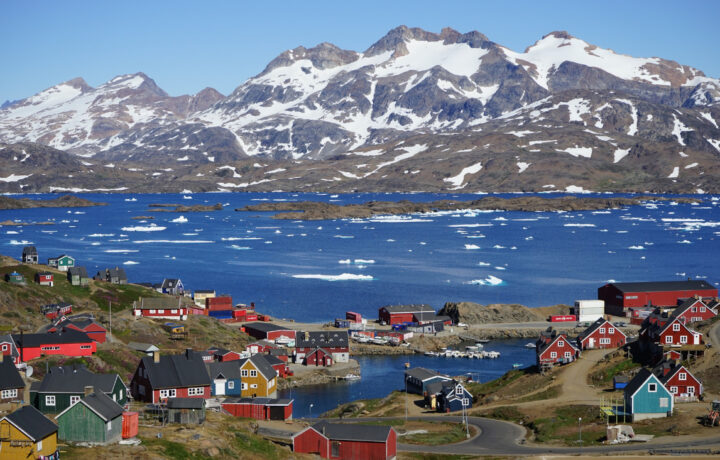The North American Aerospace Defense Command (NORAD) announced last week that it had “monitored multiple Russian military aircraft activity in the Arctic,” and while it wasn’t seen as a serious threat, U.S. and Canadian aircraft were deployed in response. That included a pair of Canadian CF-18s, and one KC-135 refueling/tanker aircraft, while the Alaskan NORAD Region (ANR) patrol consisted of two U.S. F-35s, one E-3 AWACS) and two KC-135s.
In addition, the United States Air Force has deployed F-16 Fighting Falcons to Greenland as part of a wider effort to strengthen its presence. It was conducted as part of “Its standard agreement with the Kingdom of Denmark to forward posture NORAD presence in the Arctic.”
“NORAD employs a layered defense network of satellites, ground-based and airborne radars, and fighter aircraft to detect and track aircraft and inform appropriate actions. NORAD remains ready to employ a number of response options in defense of North America,” the command added in its latest statement.
Fighting Falcons in Greenland
It isn’t clear how long the F-16s will be deployed to Greenland, or even where the aircraft have been deployed. However, the semi-autonomous island is home to the United States military’s most northernmost installation, Pituffik Space Base.
Formerly known as Thule Air Force Base, it was established as a Strategic Air Command (SAC) base in 1951 and currently serves as a United States Space Force missile warning and satellite control facility. Denmark, as a founding member of the NATO alliance, allowed the base to be operated by the U.S. Air Force as part of the 1949 and 1951 Greenland Defense Agreements with the United States.
The facility is located 750 miles (1,210 km) north of the Arctic Circle and just 947 miles (1,524 km) from the North Pole. It is home to a significant number of the global network missile warning sensors of Space Delta 4, as well as the space surveillance and space control sensors of Space Delta 2.
In 2020, Thule Air Base was transferred to the Space Force and three years later was renamed Pituffik Space Base – to pay homage to the Greenlandic people as it is the native name for the region. Though the base is also home to the northernmost deep water port in the world, it is locked in by ice nine months of the year. Yet, the base airfield operates year-round.
Greenland is nearly 840,000 square miles, but more than 80% of it is covered by ice caps or smaller glaciers.
Regular Rotations of U.S. and NATO Aircraft
This is also just the most recent deployment of U.S. Air Force fighters to Greenland. It was two years ago, that four Lockheed Martin F-35 Lightning IIs operated from the base for the first time as part of Operation Noble Defender, a series of drills held every few months by NORAD.
Additional F-35s could have a more regular presence in Greenland, as Copenhagen has announced that the Royal Danish Air Force (RDAF), which operates 17 of a planned 27 Lightning IIs, could be based at the Kangerlussuaq Airport. That could require expanding the facilities, but it may just be part of Denmark’s efforts to bolster its Arctic presence. The Danish military recently allocated $400 million to improving aerial ISR (Intelligence, Surveillance, and Reconnaissance) capabilities in the Arctic and North Atlantic, including from Greenland.
Back to Significance?
The island’s significance diminished following the end of the Cold War and the dissolution of the Soviet Union, but even as it has been in the spotlight in recent weeks, it is unlikely to see as significant a military build-up as it had during the showdown between East and West.
During the height of the Cold War, Greenland was noted for hosting nuclear-capable bombers including the Convair B-36 Peacemaker, Boeing B-47 Stratojet, and B-52 Stratofortress, as well as the Northrop F-89 Scorpion jet interceptors and a network of ground-based early warning radars.




